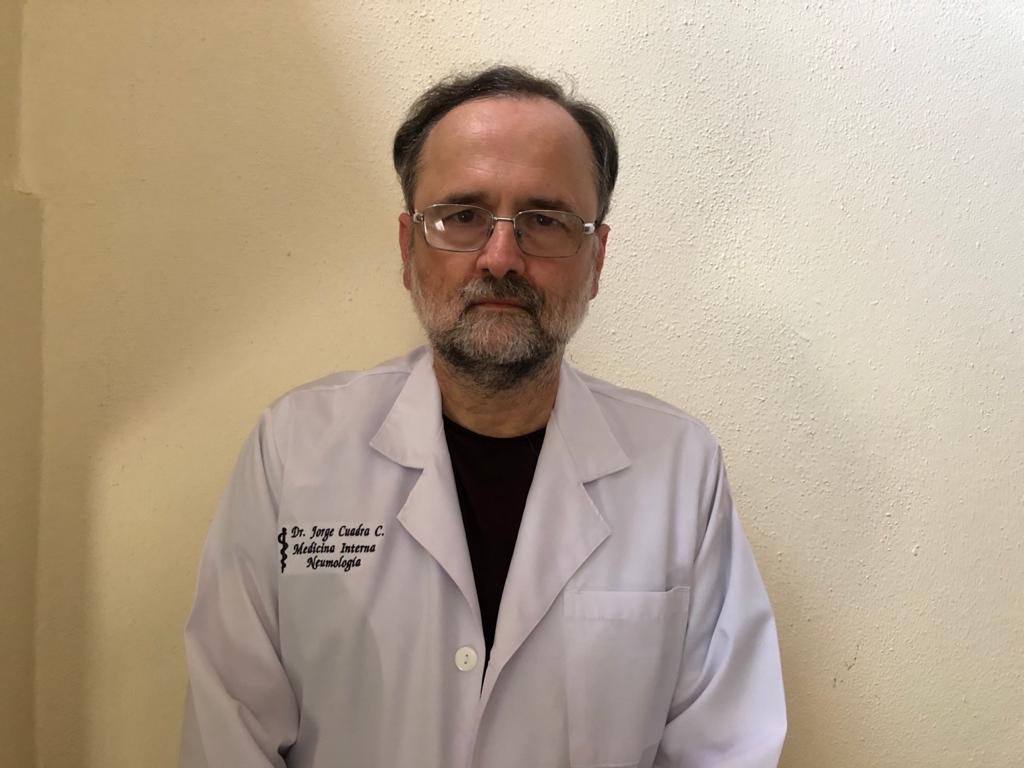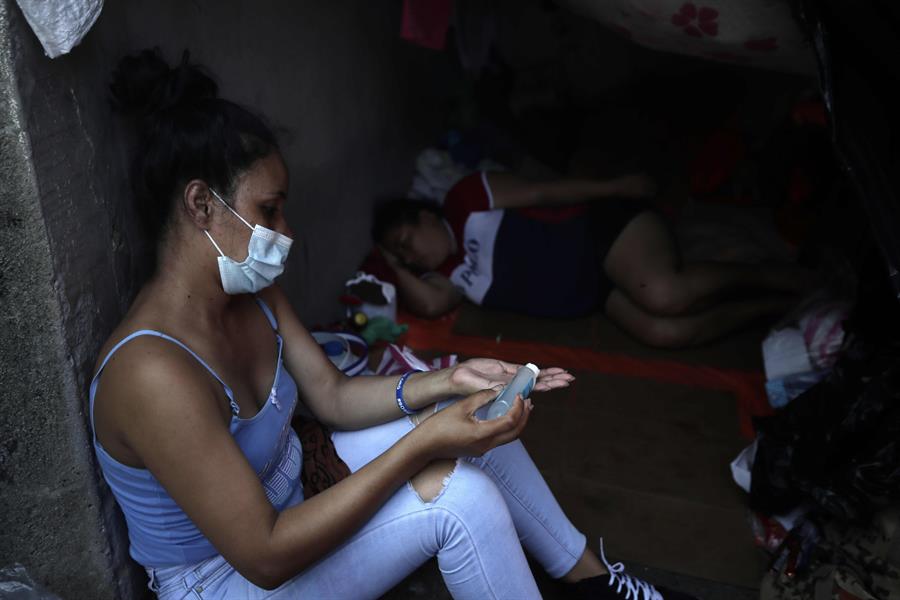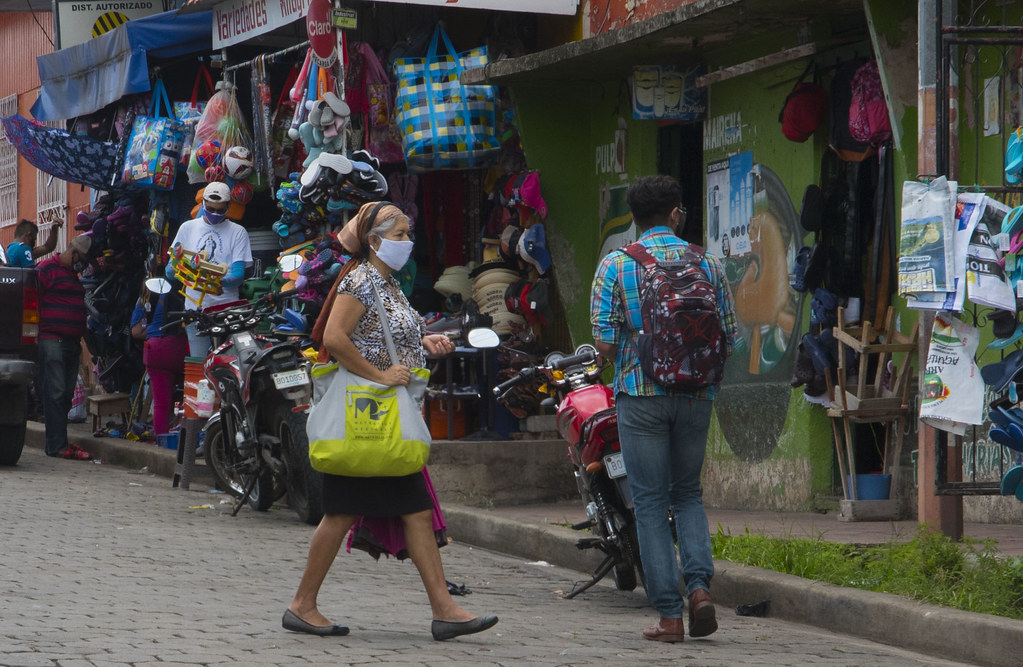Nicaragua Remains at “High Risk” says Lung Specialist
…from a new wave of COVID-19”

Even when there are underlying conditions, “the trigger & the cause of mortality” is Covid-19, asserts this doctor with over two decades in his field.
By Arlen Cerda (Confidencial)
HAVANA TIMES – During the last few weeks, there’s been a drop in hospitalizations of COVID-19 patients in Nicaragua. However, that drop is due to an “absolutely spontaneous evolution” of the disease. With no new mitigation measures in place, there’s a “very high risk” of a new outbreak, maintains Dr. Jorge Cuadra, a Nicaraguan pulmonologist with over 20 years of experience in hospitals and private practice.
“This sort of behavior, giving the impression that the problem has diminished, has lessened, could give the false impression that it’s under control. What has happened involves the spontaneous evolution of the pandemic and not a condition that’s really under control. (…) Since it’s not under control, there can easily be a new outbreak. That’s what we doctors, the clinical ones as well as the epidemiologists, fear: that we could go back to the previous phase,” he warned.
During May and the beginning of June, even with the huge gap between the official statistics and those of the independent monitoring group “Citizens’ Covid-19 Observatory”, both counts did show an exponential increase in contagions and deaths from the pandemic. Separate reports also confirmed the saturation of the hospitals, where no empty beds were left.
Statistics vs. Reality
Cuadra commented that full data on the impact of COVID-19 “isn’t really known”. He added that this observation “isn’t a political or a party comment”.
“All of us who work in the health field know that the government’s data doesn’t match the reality. That’s a purely medical vision,” the doctor affirmed. In his opinion, at this point in time “it’s going to be very hard to quantify the real dimensions of [the virus’s] magnitude.” However, he asserted: “those of us who had direct contact do know that there was an extremely high mortality.”
Dr. Cuadra signed the public letters where the medical workers warned about the lax protective measures and the lack of mitigation strategies at a national level. He stated that he did so because he was convinced of the dangers of the pandemic and the importance of acting to prevent and lessen its impact.
“This evolution [of the virus], with no measures in place, brought two problems: one, a very high cost during the period of explosion (…) and second, the current situation where cases drop for several reasons, but without having control, the risk of a new outbreak continues,” he affirmed.
Dr. Cuadra is concerned about the public’s “relaxing”, even those who adopted preventive measures. “That’s the problem when the quarantine is voluntary. One sector, the one with the highest awareness, participates, but because it’s not a generalized measure, the impact is much less,” he stated.
In addition, he warned that when some sectors don’t adopt any precautionary measures, “the impact of those who voluntarily quarantined is considerably diluted.”

In his judgement, “this is the result of hiding information and not being directed by real data (…) If we had clearer day to day information here, even assuming that no official lockdown of the economy was decreed, people would be more conscientious. But with no clear management of the data, the messages, and the risks, a percentage of the population is going to continue on with their normal activities.”
Consequences of the lack of testing
The pulmonologist also noted that “without a doubt, the greatest limitation that we doctors have had in this pandemic is the problem of the tests.” He stated that the lack of access to these kept him from confirming cases early and thus controlling the contagion in a more precise way. Lacking this, doctors have had to rely on other laboratory tests or just the clinical profiles.
“Hence, there’s a percentage of the population that have been treated [for the virus] unnecessarily; on the other hand, there’s another percentage of the population that wasn’t diagnosed and may be spreading the virus to others,” he stated regretfully.
The cost of not having access to the tests, according to Dr. Cuadra, is “very, very high”. “I don’t know if we’re the only ones, but we’re among a very few countries where we’ve had to sort through all this without having access to testing.”
According to the pulmonologist: “the tests are limited to cases that are practically confirmed in and of themselves”. As a result, the doubtful cases, or those in the early stages, presymptomatic or asymptomatic, aren’t being detected opportunely; hence, the chain of contagion isn’t cut. “If someone doesn’t know they have the illness and they continue going to work, the result is generalized contagion. Even if the tests aren’t perfect, they’re still an extremely useful resource for controlling the pandemic,” he noted.
Comorbidity “is a fictitious difference”
Among the little that is yet known about COVID-19, the world medical community has managed to define the groups at highest risk. Older people and patients with chronic diseases or other pre-existing conditions are the ones most likely to experience the severest cases of the disease and to face a greater risk of death. Nonetheless, Cuadra maintained that notwithstanding the aggravating factors, the deaths are the result of COVID-19.
He noted that there’s been discussion about whether someone with other conditions dies “with COVID” or “from COVID”. “That difference is completely fictitious,” was his verdict. “Whether or not the patients have other diseases that put them at risk, what triggers the situation and causes the mortality is the Coronavirus infection,” he affirmed.
Public health expert Carlos Hernandez conducted an analysis of the official death statistics so far in 2020. His investigation noted more than 4,000 deaths whose cause was listed as hypertension, diabetes and heart disease, but which could be suspected as being deaths from COVID-19.
Days before the presentation of that analysis, Dr. Cuadra had already declared: “in terms of mortality, whether or not the immediate end was caused by a heart attack, a pulmonary embolism or pneumonia, the cause of this fatal outcome were the processes unleashed by the viral infection.”
Fatigue and vulnerability among health workers
The statements from the Nicaraguan doctors urging prevention and mitigation of the pandemic also emphasized the lack of protection among the health workers who are on the frontlines of the battle against the pandemic.
“I believe that even among those linked to desitions on health policies, the calculations they made didn’t anticipate such a logarithmic increase, such a huge explosion of cases, right at a time when the decision – and there, yes, there were politics – not to use face masks and protective measures was still causing problems in the health centers,” he stated somberly.
Dr. Cuadra recalled: “they always said that you have to avoid having people panic.” However, “all of a sudden, from one moment to another, the demands of the situation increased explosively, and there hadn’t been any preparation.”
The result was that during the worst month of the pandemic, between May and June, the majority of the health workers, especially in the public sector, were completely unprotected. Data from “Citizens’ Covid-19 Observatory” estimated that more than 750 health workers were infected, and of those around a hundred died, among them more than 40 doctors.
“These aren’t just numbers, but people I’ve known directly in one way or another. From personal experience, those statistics are absolutely real,” Dr. Cuadra affirmed.
The doctor said that in these weeks there’s been “a greater degree of protection, a bit of an improvement in the protective equipment.” However, he commented that “there’s a level of fatigue” after several weeks in which the demand at work was extremely high, under “very difficult” conditions, with everything that the use of protective gear, the emotional burden of seeing patients in these conditions and the high mortality rate signifies.
With that level of physical and mental fatigue, Dr. Cuadra warned that he doesn’t think it’s “realistic” to imagine that those same people could confront another wave of infections like that in May. “Even if they have the equipment,” which also is becoming scarce, since they’re disposable.
“Entering once again into an explosion like that of May with the health workers experiencing this much fatigue would really be very costly,” he reiterated.
“Citizens’ Observatory” has also been caught short
The independent monitoring of the pandemic carried out by the independent “COVID-19 Citizens’ Observatory” has registered triple the number of cases as the official Ministry of Health statistics, and 25 times more deaths.
Dr. Cuadra felt that “to some extent” the “great effort” made by the Observatory reflected the real tendency of the disease. However, under conditions where they couldn’t have access to all the information, “it’s very difficult to produce real data.”

It’s a sampling, he said, but the reality is probably still greater. “If we had the capacity to test the mild cases, with their contacts, etc., I believe that we’d have seen enormous numbers,” estimated Dr. Cuadra. He was certain that even the statistics of the Observatory, which also didn’t have access to the tests, are lower than the real ones.
Dr. Cuadra noted that in his twenty years of experience in private practice and hospital wards, “I’d never had an experience like this, from any point of view.” This was unique in the volume of patients, the physical and emotional burden, the work of maintaining contact with high numbers of patients under conditions of enormous anxiety, without access to hospital management.
Personally, Dr. Cuadra has employed extreme personal protective measures against the pandemic, without neglecting his work, by utilizing equipment with the greatest level of protection.
“We’re far from having satisfactory levels of attention,” he recognized, “but even in those countries that have achieved better management, the opinion is the same. That is, this has been a situation which was completely unprecedented.”





